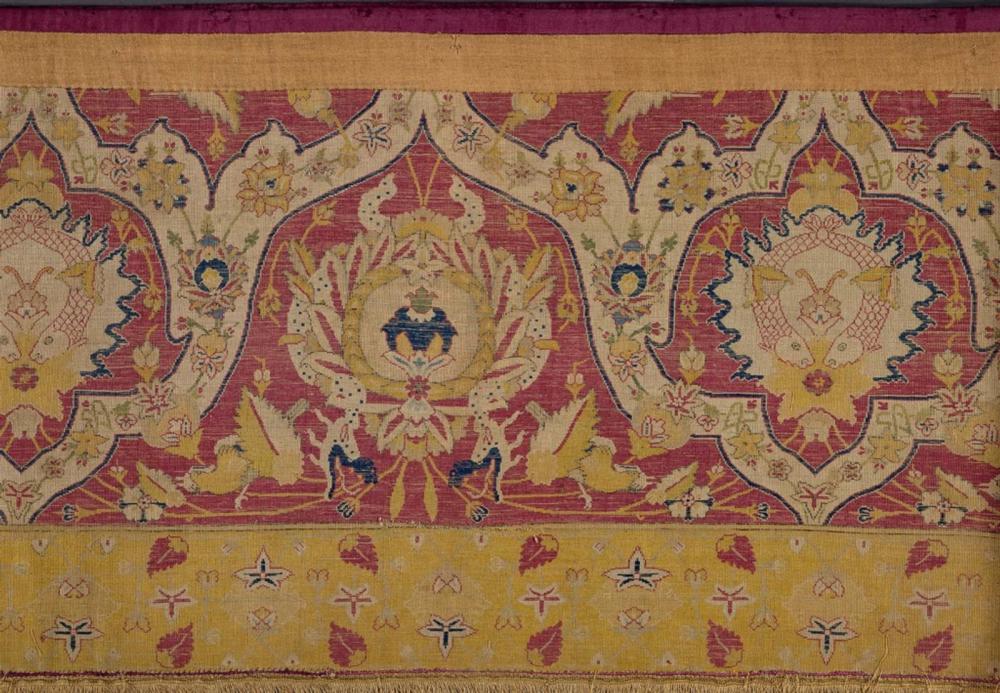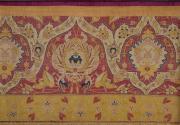Advanced Search
Rug
Border fragment of a silk carpet
Rug
Persian
Safavid Dynasty
probably third quarter of the 16th century
Object Place: probably Kashan, Iran (Persia)
Medium/Technique
Silk knotted pile, silk warp, silk weft
Dimensions
58 x 136 cm (22 13/16 x 53 9/16 in.)
Credit Line
Julia Bradford Huntington James Fund
Accession Number03.621
NOT ON VIEW
CollectionsAsia, Fashion and Textiles
ClassificationsTextiles
DescriptionBorder fragments like this are all that remain of a once magnificent Persian silk carpet. In its entirety it probably looked like the so-called Branicki carpet, which had the same clever border design of leafy palmettes with fish inside them or dragons slinking around their edges. [The Branicki carpet was presumably destroyed in World War II. It is illustrated in Arthur Upham Pope, ed., A Survey of Persian Art, London and New York, 1939.] The MFA bought this fragment in 1903 from the auction of carpets owned by the late Henry Gurdon Marquand (1819-1902), a financier, railroad owner, major benefactor of the Metropolitan Museum of Art, and collector on a grand scale.
Warp silk; weft, silk; pile silk; 600 Persian (Sehna) knots to the square inch. The ground of the main border is deep pink. A band of white outlined with blue and pink, detailed with palmettes and other flower forms, divide the ground into irregular spaces. In some of the spaces are conventional leaf forms, on which are two fish tied together by their tails, a palmette with a dragon on each side, birds, flowers, and leaves. The colors of the pattern are white, yellow, blue, green, pink, and black. The latter is almost entirely disappeared. On three sides is a yellow border with a design of scattered leaves. Sewed to the bottom is a white silk fringe, with a gold thread worked into the heading.
Warp silk; weft, silk; pile silk; 600 Persian (Sehna) knots to the square inch. The ground of the main border is deep pink. A band of white outlined with blue and pink, detailed with palmettes and other flower forms, divide the ground into irregular spaces. In some of the spaces are conventional leaf forms, on which are two fish tied together by their tails, a palmette with a dragon on each side, birds, flowers, and leaves. The colors of the pattern are white, yellow, blue, green, pink, and black. The latter is almost entirely disappeared. On three sides is a yellow border with a design of scattered leaves. Sewed to the bottom is a white silk fringe, with a gold thread worked into the heading.



